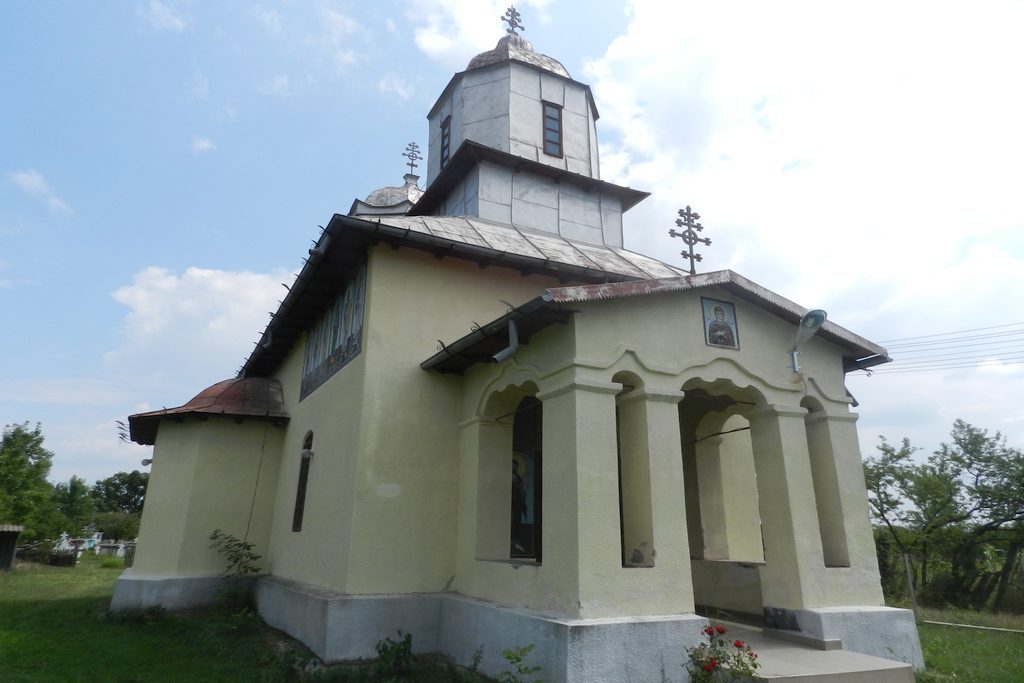

Church of wood from Optăşani is dedicated to
“Saint Paraskeva” and is dated from 1911. In the cemetery behind the church is a church chapel raised from the previous church’s beams that retain sculpture, decorative details, and inscriptions fragments of interest. In the Optăşani cemetery is still kept a wooden chapel built around an ancient altar table belonging to the previous wooden church. The walls of the chapel are lifted from beams recovered from different parts of the old building. Old beams, partially damaged by the weather, are precious witnesses of the old church of which can, still, be recovered some of its defining features. The wooden church was built at an ambitious scale , with the narthex and nave for a monumental wooden building, finished in elevation with two high towers, positioned over the the roof ridge. At the nave there are two lateral apses and on the east apse, stands out the altar abse. On the west the entrance is sheltered by a high porch. The walls are plastered and painted, giving the impression of a church wall.
The old church was raised from oak facing beams, concluded in ecclesiastical smooth loops. The church had probably the three traditional rooms, narthex, nave and altar, accessible through a porch in front of the entrance, on the west side. It can thus be distinguished a beam with characteristic decorations of a porch grind. Of the overhangs which come out under the eaves is still kept one with an end of horse, which after joining diagonal combination suggests that belonged to a closed polygonal wall, probably from the altar. Have been preserved some very small meshes for the window, flared to the inside.
The most interesting beams are coming from the front entrance wall, which are kept fragments of inscription in Romanian with Cyrillic letters, which once demanded remembrance and honoring the acts of foundation of ancestors of the community. Is distinguished among other the year of Byzantine era „7350”, meaning the years 1841-1842 of our era, that can mark in time, one of the necessary repairs to maintain the old sanctuary. Real age was certainly much higher, the old abode being built, probably in the 18th century or even at the end of the 17th century. In 1997 they began the renovation of this church, and in 1999 concrete was poured for the strength belt, the works being completed in 2006.
